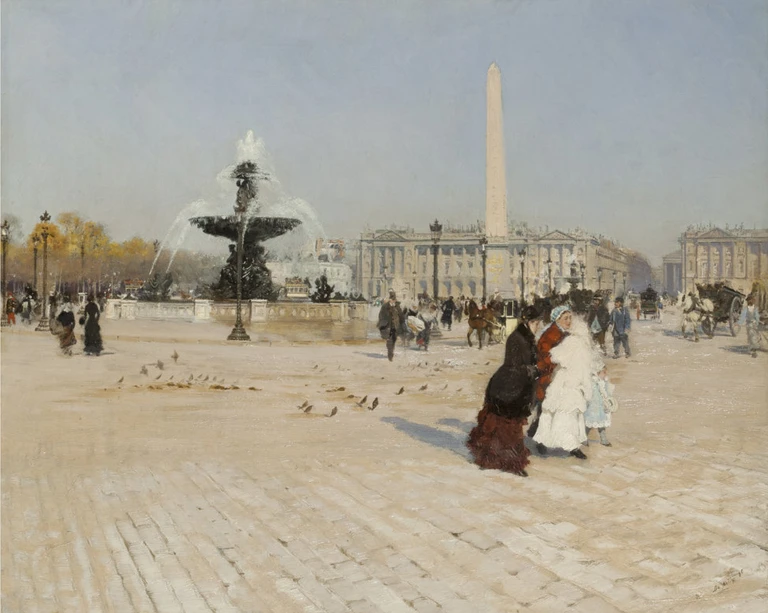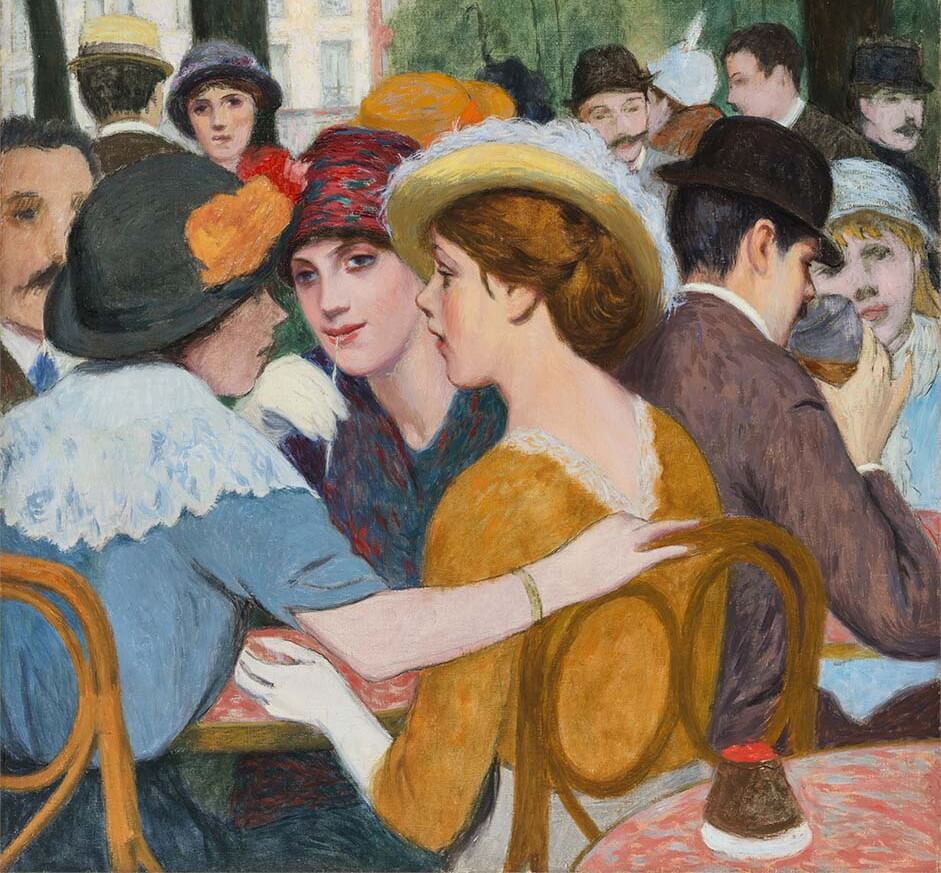Giuseppe De Nittis, A corner of the Place de la Concorde in Paris

After his return to Paris in 1873, Giuseppe De Nittis felt reborn. He and other avant-garde artists began to experiment with new forms of expression, inspired by the boulevards designed by Baron George Haussmann, the crowded squares crossed by carriages and horses.
De Nittis, by dedicating himself to the genre of the Parisian urban view that he found so congenial, was, in a short time, elevated, together with Giovanni Boldini, to the rank of painter of contemporary life.
This image of Paris proposed by De Nittis is constructed with rigour, but does not exclude the freedom of interpretation of reality. His participation in the narrated themes manifests itself and takes shape in the widespread knowledge of plurality, of the complexity of the urban scene, investigated and returned in its autochthonous value, almost excluding the artist's subjective gaze. He reveals himself through the composition and viewpoint, but seems to retract himself to make the city speak directly. De Nittis is the poet of modern times.
With the exception of certain airy views, his brushstrokes are usually short and dense. He takes into account the essential: that is, he captures that particular moment of place and time with a precision that manages to describe reality as it remains in the memory, then faithfully hands down its distilled appearance. From this technical approach, we can understand that many of his views are foreshortened, with strong, often mellow touches.
In nearly every work we find an admirable contrast of light and dark. These are paintings in which the emotion of the urban landscape does not arise so much from an isolated note, but from a complex symphony of affections; works capable of blending together all the external sensations, but also revealing the artist's inner desires, memories long since dormant; in particular, they tell him - and us - a secret part of his character. There is no landscape he has sketched with a brush or pastel in which a greatness of spirit and thought does not transpire, even through the most minute details and brightest specks of color.
Giuseppe De Nittis
(Barletta 1846 - St. Germain en Laye 1884)
A corner of the Place de la Concorde in Paris, 1880, 1880
Oil on canvas., 52 x 43,5 cm
Signed and dated bottom right: De Nittis 80
Provenenace
A. Sommaruga, Paris; Emanuele Rossello, Milan


